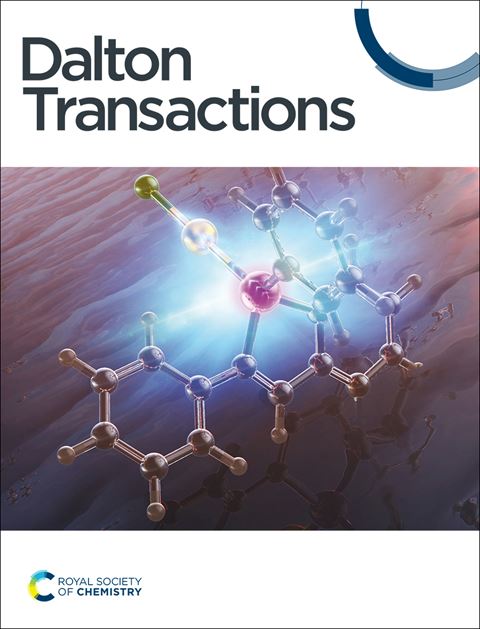磁性纳米片与极性膦配体杂交的非导电铁磁流体
IF 3.5
3区 化学
Q2 CHEMISTRY, INORGANIC & NUCLEAR
引用次数: 0
摘要
由六铁氧体钡纳米片(BHF NPLs)组成的铁磁流体是一类显著的材料,可以在足够高的浓度下形成铁磁液态。迄今为止,表面活性剂十二烷基苯磺酸(DBSA)已经证明了BHF NPLs在醇中的良好胶体稳定性。然而,DBSA的一个关键限制是它在不良贷款上的不稳定吸附,这意味着表面活性剂分子的表面覆盖对各种因素都非常敏感。在这项研究中,我们证明了基于膦酸和膦酸酯的极性配体为DBSA提供了一种可行的替代品,在低极性溶剂中具有增强的鲁棒性和胶体稳定性。合成了具有不同吸电子基团和末端链和连接体烷基链长度的膦配体。在各种条件下研究了它们在BHF NPLs表面的附着,随后结合了光谱技术、热重法和电动测量。结果证实了理论预测的配体在120°C的1-己醇中在BHF NPLs表面上的表面缩聚,而在较低温度或更极性的溶剂中,配体大多被物理吸附。具有化学吸附配体的NPL杂化体表面密度至少为0.4分子/nm2,在1-己醇中形成稳定的铁磁流体。由于1-己醇的极性相对较低,配体保持质子化,铁磁流体的导电性可以忽略不计,适合于开发可以在电场下工作的新型磁光传感器。本文章由计算机程序翻译,如有差异,请以英文原文为准。
Nonconductive ferrofluids from permanently magnetic nanoplatelets hybridized with polar phosphonic ligands
Ferrofluids composed of permanently magnetic nanoplatelets of barium hexaferrite (BHF NPLs) represent a remarkable class of materials that can form a ferromagnetic liquid state at sufficiently high concentrations. To date, the surfactant dodecylbenzenesulfonic acid (DBSA) has demonstrated an excellent colloidal stability of the BHF NPLs in alcohols. However, a key limitation of DBSA is its labile adsorption onto the NPLs, meaning that the surface coverage by surfactant molecules is highly sensitive to various factors. In this study, we demonstrate that polar ligands based on phosphonic acids and phosphonate esters offer a viable alternative to DBSA, providing enhanced robustness and colloidal stability in low-polar solvents. Phosphonic ligands with the different electron-withdrawing groups and alkyl chain lengths of the terminal chain and linker were synthesized. Their attachment to the surface of the BHF NPLs was studied for various conditions and followed by a combination of spectroscopic techniques, thermogravimetry, and electrokinetic measurements. The results confirmed the theoretically predicted surface condensation of the ligands onto the BHF NPLs surfaces at 120 °C in 1-hexanol, whereas at lower temperatures or in more polar solvents the ligands were mostly physisorbed. The NPL hybrids with chemisorbed ligands having surface densities of at least 0.4 molecules/nm2 formed stable ferrofluids in 1-hexanol. Due to the relatively low polarity of 1-hexanol, the ligands remain protonated and the ferrofluids have negligible electric conductivity and are suitable for the development of novel magneto-optic sensors that can operate under an electric field.
求助全文
通过发布文献求助,成功后即可免费获取论文全文。
去求助
来源期刊

Dalton Transactions
化学-无机化学与核化学
CiteScore
6.60
自引率
7.50%
发文量
1832
审稿时长
1.5 months
期刊介绍:
Dalton Transactions is a journal for all areas of inorganic chemistry, which encompasses the organometallic, bioinorganic and materials chemistry of the elements, with applications including synthesis, catalysis, energy conversion/storage, electrical devices and medicine. Dalton Transactions welcomes high-quality, original submissions in all of these areas and more, where the advancement of knowledge in inorganic chemistry is significant.
 求助内容:
求助内容: 应助结果提醒方式:
应助结果提醒方式:


